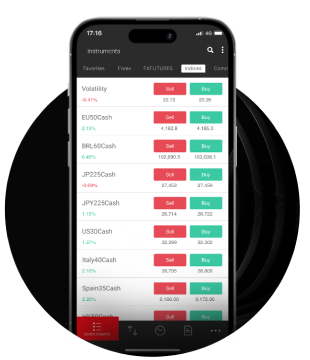As the Israel-Iran conflict began, many traders and business entities had their eyes on oil. With Iran being a major oil supplier, the risk of its supply lines stalling created a very real possibility of shortages. As such, the market reacted sharply, shooting energy prices sharply upwards.
During the 12-day conflict, Brent challenged the $80 mark but barely came up short. WTI was steadier, holding just above the $75 mark for multiple days.
However, with the ceasefire brokered to begin on the 24th of June, some tension has left the markets. Both WTI and Brent have retracted to closer to the $65 mark, a significant withdrawal.
But the ceasefire isn’t the only thing pushing the price of oil down. Another pressure comes from the increased supply from the Organization of the Petroleum Exporting Countries and its allies (OPEC+). It intends to continue its plan unveiled in April, where it aimed to unwind the reduced production in 2024. To make up for its voluntary cut of 2.2 million barrels per day (bpd), OPEC+ has started adding 411,000 bpd on a monthly basis.
This trend started in May, and while it was already announced for June and July, OPEC+ confirmed that it would carry on in August as well. This push from the organisation may fill up global oil inventories and further cool oil prices.
Finally, global demand has dropped, namely from China, with the giant seeing three consecutive months of factory production rates staggering. Additionally, it is moving away from oil somewhat, with EV adoption slowing demand.
However, many experts believe the ceasefire may not last, and that prolonged conflict could result in a more lasting price shift. This article will present the latest events and possible developments regarding oil in the context of the Israel-Iran conflict.
What are the big concerns?
Let’s look into what the specifics driving oil prices are. Here, it’s important to remember that the market isn’t always objective, and fear can be a powerful motivator. As such, even while oil reserves are plentiful, emotions may run wild and force the market to react counterintuitively.
Fear and uncertainty
On the back of the previous statement, the primary market drivers when global conflicts begin are fear and uncertainty. Although these skirmishes rarely have significant and lasting effects, the possibility that they do is always present. Additionally, traders and investors expect others to react, so they often go with the flow so as not to get left behind.
This effect can force either a bear or a bull market depending on the specific situation. And since oil supply lines are in danger in the Israel-Iran conflict, traders are concerned about demand superseding supply.
The fact that the world is somewhat oversupplied with oil is secondary here. Conflict will always prompt a market reaction.
This effect is most prominent as the conflict is starting and heating up. The same goes for when fighting restarts after a calm period. In this particular instance, if the ceasefire were to end, it’s somewhat likely that a price hike would occur once again.
Strait of Hormuz
Another, more specific danger, comes from the Strait of Hormuz, an oil supply line that connects the Persian Gulf to the Gulf of Oman. The Strait is a significant choke point, and 18–21 million barrels per day go through, constituting around a fifth of global daily expenditure.
While there are some alternatives, the infrastructure either doesn’t exist or supports a far smaller quantity of oil. As such, closing the Strait of Hormuz would have a rippling global impact.
What traders need to remember is that oil is expendable. As such, even if the world is currently oversupplied, the inability to access such a large portion of global supply would quickly cause prices to skyrocket. Numerous reputable forecasters have predicted that even in a short-term context, this could send oil prices to over $90.
What’s more concerning (or, perhaps, alluring from the trader perspective) is the possibility of a long-term closure. Goldman Sachs projected that a one-month closure followed by 10% lower flows for 11 months could push Brent to around $110/barrel. In the event of a longer closure, the effect could be even more prominent, effectively doubling the current oil price.
So is there any reason to believe that the Strait will close? Yes, in fact, there is. Iran has already threatened to close the Strait in the event of a prolonged conflict.
This is important because, while the ceasefire is active, the US is still assaulting Iran. In other words, if Iran feels pressured by the US attacks, it may close the strait regardless if the ceasefire continues or not.
This presents a balancing act. The US is likely to be somewhat careful with the intensity of its attack, since it doesn’t want to risk the closure. On the other hand, the closure may prompt a more severe attack, meaning that Iran also has to consider its next move.
Altogether, this reduces the risk of the closure actually happening, but it still remains a looming threat.
What if nothing happens?
If the situation remains relatively calm, even if fighting continues without major spikes, the likelihood is that oil prices will keep shrinking. IEA data shows global supply already outpacing demand by about 1.8 mb/d, driven by OPEC+ production hikes as well as significant non-OPEC+ supply.
Additionally, major economies like China, as mentioned, are experiencing shrinking oil needs. Naturally, when such a large buyer reduces the amount they are purchasing, the global market experiences quite a significant impact.
Final note for traders
While speculating on the price of oil in isolation may be appealing, it’s wise to remember that it also has a rippling impact. Increased oil costs increase business costs, especially in energy-heavy industries. Similarly, they may have a significant impact on the forex market if a country is either a major exporter or importer. As such, even non-direct oil traders should keep an eye on how the situation develops, so ase to not get blindsided if their market gets hit by oil price shifts.
면책 조항: 본 자료는 투자 권유가 아니며 정보 전달의 목적이므로 참조만 하시기 바랍니다. IronFX는 본 자료 내에서 제 3자가 이용하거나 링크를 연결한 데이터 또는 정보에 대해 책임이 없습니다.
















